
Product labels aren’t just decoration; they’re critical tools for profitability, efficiency, and compliance. Whether you’re meeting FDA regulations, building shelf appeal, or keeping up with production demand, your labeling strategy plays a central role in your product’s success.
In this guide, we’ll walk through everything you need to know about labeling, starting with the different application types and equipment options, followed by a deep dive into materials, label styles, design best practices, and how to choose the right labeler for your workflow.
If you’re looking to reduce waste, avoid compliance issues, and create packaging that customers trust, this guide will show you how to make informed, strategic decisions.
Understanding the Different Types of Labeling Applications
Choosing the right labeling method is crucial to ensure your production process is efficient and product labels are applied accurately. Depending on the scale of operations and specific requirements, businesses can opt for manual, semi-automatic, or fully automatic labelers. Each method offers distinct advantages and considerations that impact productivity, consistency, and scalability.

Manual Labeling
Manual labeling is when you apply each individual label by hand. It is often suitable for small-scale operations or custom, low-volume products. While this method provides flexibility, it can be time-consuming and prone to inconsistencies, making it difficult to scale efficiently. Manual labeling can lead to higher error rates and reduced productivity, ultimately limiting the potential for business growth.
Semi-automatic Labeling
Semi-automatic labeling uses equipment to assist with the application process while still requiring some manual intervention, such as placing or removing containers. This method provides increased speed, improved consistency, and reduced operator fatigue compared to manual methods.
At Pack Leader USA, we offer several semi-automatic solutions ideal for medium-sized operations or manufacturers scaling up gradually. Models like the ELF-20, PL-211, PL-221, and PRO-215 offer compact designs with advanced features like easy-to-use controls, quick changeovers, and labeling precision. They’re a great fit for brands that want a step up in efficiency without committing to full automation.
Fully Automatic Labeling
Fully automatic labeling systems are built for high-speed, large-scale production environments. These systems minimize the need for human involvement by automating product handling, label application, and adjustment processes, ensuring consistent, precise label placement even during long production runs.
If you need to streamline production, reduce labor costs, and scale with confidence, our automatic labelers deliver unmatched performance. Models like the PL-252D, PL-501, PL-622, and PRO-625W are designed for efficiency and flexibility, featuring advanced systems like auto-set adjustments, missing label detection, and memory presets for fast changeovers. They are ideal for manufacturers that demand speed, accuracy, and reliable output at scale.

3 Considerations for Choosing the Right Labeling Method
1. Production Scale
Evaluate the volume of products you will need to label to determine the most efficient method. For small batches or custom orders, manual or semi-automatic labeling might suffice. However, fully automatic labelers are essential for large-scale operations to handle high volumes efficiently and maintain consistency across each product.
2. Speed Requirements
Consider the production speed needed to meet market demands. Semi-automatic labeling offers reasonable speed improvements over manual labeling, making it suitable for medium-scale production. Fully automatic systems provide the highest speeds and are ideal for high-demand products where quick turnaround times are critical to stay competitive.
3. Budget Constraints
Balance the initial investment in a labeler with long-term operational benefits. While fully automatic systems require a higher upfront investment, they can significantly reduce labor costs and increase efficiency over time. Semi-automatic systems provide a middle ground with moderate initial costs and improved productivity. Manual labeling, though initially inexpensive, may incur higher labor costs and inefficiencies in the long run.
Types of Pressure-sensitive Product Labels
Understanding the different types of pressure-sensitive labels is essential for selecting the best option for your product's needs. Each type of label material offers distinct characteristics and advantages, making them suitable for different applications and industries.

Paper Labels
Pressure-sensitive paper labels are versatile and cost-effective, making them a popular choice for diverse applications. They are easy to print on and offer a wide range of finishes, including matte, glossy, and textured. They are commonly used in food and beverage, retail, and consumer goods industries for products like jars, bottles, and boxes.
Benefits:
- Affordable
- Easy to customize
- Suitable for short-term use
Limitations:
- Less durable than other materials
- Not ideal for high-moisture or high-wear environments

Film Labels
Film labels are known for their durability and ability to resist moisture, chemicals, and tearing. This makes them ideal for harsh environments. Film labels are suitable for products requiring long-term label durability, such as cosmetics, pharmaceuticals, and industrial goods. They are most commonly used in the cosmetic, pharmaceutical, and industrial sectors for products like tubes, bottles, and equipment.
Types of Film
- Polypropylene (PP): Known for its clarity and durability.
- Polyester (PET): Offers excellent resistance to chemicals and temperature extremes.
Advantages
- High durability
- Excellent print quality
- Resistant to environmental factors

Foil Labels
Foil labels offer a premium, metallic finish that enhances product aesthetics and creates a high-end appearance. These types of product labels are preferred for luxury goods, promotional items, and products where a premium look is essential. You will likely find this material in wine and spirits, cosmetics, and gourmet food industries for bottles, jars, and packaging that requires a luxurious touch.
Advantages:
- Premium aesthetic appeal
- Extremely durable
- Allows for versatile designs
Specialty Product Labels
Tamper-evident Labels: These labels provide security by showing evidence of tampering. This is crucial for pharmaceuticals and high-value products.
Waterproof and Weather-resistant Labels: Designed to withstand exposure to water and harsh weather conditions, these product labels are ideal for outdoor products and applications.
Smart Labels With QR Code Integration: QR codes add interactivity, allowing customers to scan for product info, authenticity verification, promotions, or traceability, making them ideal for food, wellness, and tech products.
Customizable Options: From holographic finishes to transparent labels, customization opens the door to strong branding. You can tailor label materials, finishes, and formats to match product style and compliance needs.
Eco-Friendly Labeling Solutions: Options include biodegradable adhesives, recyclable label stock, and water-based inks. These help reduce environmental impact without compromising quality or performance.
Label Design Tips for Maximum Impact
The design of a label is critical for branding and compliance. A well-designed label can enhance brand recognition and ensure that regulatory information is clearly communicated. Product labels serve as the face of the product and influence a consumer's first impression. An effective design can differentiate a product in a competitive market, making it instantly recognizable and appealing.
A quality label design ensures that all necessary information, such as ingredients, warnings, and expiration dates, is easily accessible and complies with industry standards.

3 Design Factors to Consider
1. Shape and Size
Ensure the label fits the packaging and stands out on the shelf. The shape and size of a label should be tailored to the specific dimensions and contours of the packaging. Product labels that are too large or too small can look unprofessional and fail to cover the necessary surface area, potentially omitting crucial information.
2. Color and Printing Techniques
Choose colors and printing methods that align with the brand’s identity without hindering its readability. Color choices should evoke an emotional response and reflect the brand's personality. For example, vibrant colors can indicate energy and freshness, while muted tones can convey sophistication.
Printing techniques, such as digital printing or embossing, can enhance the label's visual appeal and texture, adding an element of quality and craftsmanship.
3. Integration With Packaging Design
The label should complement the overall packaging design to create a cohesive look. The label should enhance the packaging rather than clash with it to create a seamless visual experience. This can involve aligning the label’s color scheme, font, and imagery with the packaging design elements.
Thoughtfully incorporating these elements can make the product more attractive and professional, ultimately enhancing its shelf appeal and consumer perception.
Choosing the Right Label Type for Your Packaging
The type of label you choose plays a vital role in how your product is perceived, how information is communicated, and how easily it integrates into your packaging line.
Here’s a breakdown of four common label types and when each one makes the most sense.

1. Front and Back Labels
This dual-label is a popular choice for products that need visual appeal and space for detailed information. A front label typically features your brand name and design elements that catch a shopper’s eye, while the back label includes nutritional facts, ingredients, usage instructions, or regulatory disclosures.
Ideal for: Beverages, sauces, personal care items
This two-label setup allows you to separate form from function. A bold, eye-catching front label grabs attention on the shelf, while the back label cleanly organizes required details like ingredients, compliance information, or instructions. It’s an effective way to balance branding with clarity.
2. Top and Bottom Labels
Top and bottom labeling is commonly used for clamshell packaging, deli containers, and other trays where visibility and functionality are key. The top label often focuses on branding and product names, while the bottom label holds barcodes, expiration dates, and ingredient lists, making retail scanning and inventory tracking more efficient.
Ideal for: Deli packaging, bakery goods, prepackaged meals
Ideal for trays, clamshells, and deli packaging, this layout makes the most of limited surface area. You can maintain a sleek top-facing design for branding while using the bottom for barcodes, pricing, or ingredient lists, keeping everything organized without compromising presentation.
3. Wrap Around Labels
Wrap around labels use a single label to cover most or all of a cylindrical container. They’re great for maintaining continuity across the product’s surface, providing a 360-degree design canvas. These labels offer a sleek, cohesive look and plenty of space for storytelling, branding, and compliance information.
Ideal for: Bottles, jars, cans
Wrap around labels give you more freedom to create an engaging, cohesive design. They’re simple to apply to cylindrical containers and provide plenty of space for branding and required product information, making them a smart blend of efficiency and impact.
4. Shrink Sleeve Labels
Shrink sleeve labels are heat-shrunk to conform to the shape of your container, even irregular or contoured designs. They offer complete coverage and are often used for tamper-evident packaging or to make a product visually pop on the shelf.
Ideal for: Energy drinks, nutraceuticals, custom-shaped bottles
These labels offer full-body coverage for branding, messaging, and regulatory info. The result? A standout look with extra space for content and the added benefit of tamper-evident protection.
Application Considerations for Selecting the Right Labeling Solution
To select the right labeler, you must carefully consider how the label will interact with the product and its environment. Various factors can influence the effectiveness and durability of the label.

Matching Labels to Packaging
Different label materials adhere better to certain surfaces, so it is important to choose a label that is compatible with the packaging material. For instance, product labels designed for glass containers might not adhere as well to plastic or metal surfaces.
Additionally, textured or irregular surfaces require flexible labels that can conform to the contours without peeling or wrinkling. Understanding the compatibility between the label material and the packaging ensures that the label remains securely attached throughout the product's lifespan.
Adapting Labels to Environmental Conditions
Consider the environmental conditions the product will be exposed to, such as temperature, humidity, and exposure to chemicals, to ensure the label remains intact and legible. Product labels on products stored in refrigerated or frozen environments must withstand low temperatures and moisture without deteriorating.
However, products exposed to sunlight or harsh chemicals require labels that are UV-resistant.
Maximizing Label Adhesion
Proper application pressure ensures a secure bond. There are different types of pressure-sensitive adhesives, such as permanent, removable, and repositionable, each suited for specific applications. Permanent pressure-sensitive adhesives provide a strong, lasting bond, while removable adhesives allow for easy label removal without residue.
Applying pressure during the labeling process also plays a critical role in adhesion quality. Insufficient pressure can lead to bubbling or peeling, ultimately compromising the label's effectiveness.
Why Choosing the Right Label Matters for Your Business
Selecting the right quality labeling solution will significantly impact a product's success in the market. There are numerous benefits of well-chosen product labels, from enhancing visual appeal to ensuring regulatory compliance.

Enhance Brand Recognition With Eye-catching Labels
Choosing the right label enhances product aesthetics, making it more appealing to consumers and strengthening brand recognition. A visually unique label can capture a consumer's attention and differentiate the product from competitors on crowded store shelves.
Consistently using brand colors, logos, and design elements across all labels can help reinforce brand identity and build customer loyalty.
Protect Your Product Information With Durable Labels
Durable product labels withstand environmental factors, ensuring the product remains in good condition throughout its lifecycle. Labels that resist moisture, UV light, and abrasion protect the printed information from fading, smudging, or peeling. This is crucial for products that are stored in refrigerators or outdoor settings.
By maintaining their integrity over time, durable product labels ensure that important information remains legible, which is vital for consumer safety and satisfaction.
Build Consumer Trust With Transparent, Compliant Labels
Regulatory bodies mandate specific labeling requirements for different industries to ensure that products are safe and properly represented. Compliance with these regulations avoids costly fines, product recalls, and legal liabilities.
Clearly displaying the regulatory information, such as nutritional facts or safety warnings, can build consumer trust by demonstrating the brand's commitment to transparency and industry standards.
Reduce Costs With Efficient Labeling Solutions
Quality labelers minimize waste and reduce costs associated with labeling errors and product recalls. Investing in high-quality product labels and reliable application methods reduces the likelihood of mislabeling, which can lead to significant financial losses and damage to brand reputation.
Automating the labeling processes can streamline operations, reduce labor costs, and increase production efficiency. The right labeling solution can contribute to long-term cost savings by reducing the need for rework and improving overall operational flow.
Labeling Challenges Assessment Checklist
Visual Appeal & Brand Consistency:
- Do your labels stand out on the shelf and reflect your brand identity?
- Are your logos, colors, and fonts consistently applied across all products?
- Are your labels enhancing or diminishing your product’s perceived value?
Label Durability & Environmental Resistance:
- Are your labels smudging, fading, or peeling in storage or transit?
- Do they hold up in environments like refrigeration, outdoor use, or high humidity?
- Are you receiving complaints about unreadable or damaged product labels?
Regulatory Compliance & Transparency:
- Are your labels meeting all industry regulations and legal requirements?
- Is important information (e.g., nutritional facts, warnings) clearly displayed and easy to read?
- Have you experienced compliance issues, fines, or recalls due to labeling?
Operational Efficiency & Cost Control:
- Is your current labeling process prone to waste or errors?
- Do mislabels or incorrect information lead to costly rework or downtime?
- Are you relying on outdated or manual systems that slow down production?
Get Consistent Results and Higher ROI With Automation
Manual labeling might work for small batches, but as production ramps up, the cost of human error adds up fast. Crooked product labels, misalignment, or wasted product due to rework becomes more and more common. That’s where labeling automation starts to pay off.
Semi-automatic and fully automatic labelers speed up the process and provide consistency that’s hard to match by hand. Features like missing label detection, auto-set adjustments, and container sensors help ensure every product is labeled precisely, reducing waste, minimizing downtime, and cutting labor costs.

For example, our PL-501 Wrap Around Labeler offers fast, repeatable labeling for round containers and can be easily adjusted to accommodate different container sizes. The PL-622 Front and Back Labeler handles more complex applications with precision and comes with built-in controls that maintain consistency even during changeovers.
Automation gives you the tools to scale with accuracy, reduce product loss, and get a better return on your labeling investment.
It’s Time to Rethink Your Labeling Strategy
Choosing the right quality label helps ensure your product stands out on the shelf, survives real-world conditions, and meets every requirement along the way. From selecting durable materials to designing for impact and choosing the right equipment for your line, each decision influences how well your packaging performs.
With thoughtful design and automation-ready equipment, you can reduce labeling errors, minimize downtime, and deliver a consistent, polished experience from first glance to final use.
If you’re ready to improve your labeling process, download the “Practical Guide to Choosing the Right Labeling Equipment” to take the next step. You’ll discover how to streamline your setup, cut operational costs, and give your brand the packaging it deserves.
.webp?width=200&height=114&name=2x-Packleader-logo-large%20(1).webp)

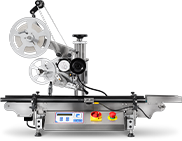
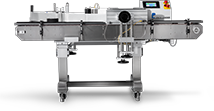
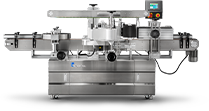
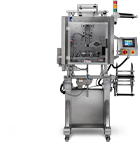
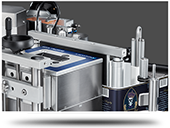
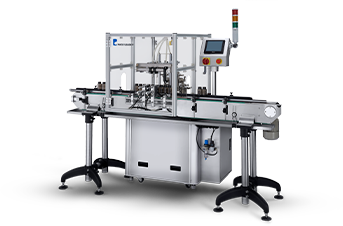

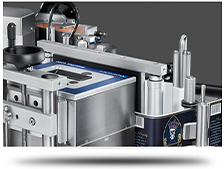





.webp?width=360&name=2x-color-logo%20(1).webp)